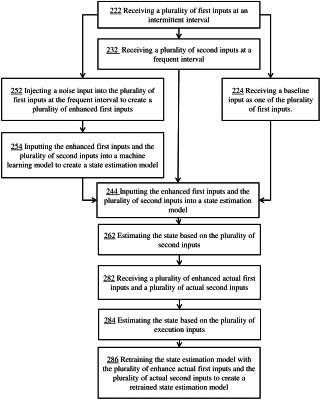| CPC A61B 5/165 (2013.01) [A61B 5/316 (2021.01); A61B 5/369 (2021.01); A61B 5/7203 (2013.01); A61B 5/7246 (2013.01); A61B 5/7267 (2013.01); A61B 5/7475 (2013.01); G09B 23/28 (2013.01); G16H 50/30 (2018.01)] | 30 Claims |

|
1. A computer based method to estimate a user functional state, the method comprising:
receiving a plurality of first inputs at an intermittent interval;
receiving a plurality of second inputs at a frequent interval;
inputting the plurality of first inputs and the plurality of second inputs into a functional state estimation model whereby a user functional state can be estimated based on the plurality of second inputs;
wherein the user functional state comprises an objective measure cognitive state of a trainee in a computer lased training simulator;
wherein the objective measure cognitive state comprises one selected from a group comprising:
a real-time engagement of the trainee in a training situation, and
a real-time workload of the trainee in the training situation;
receiving a plurality of enhanced actual first inputs and a plurality of actual second inputs;
retraining the functional state estimation model with the plurality of enhanced actual first inputs and the plurality of actual second inputs to create a retrained functional state estimation model; and
estimating the user functional state with the retrained functional state estimation model.
|